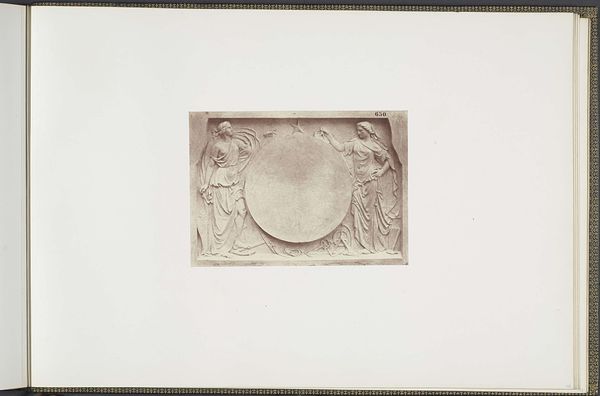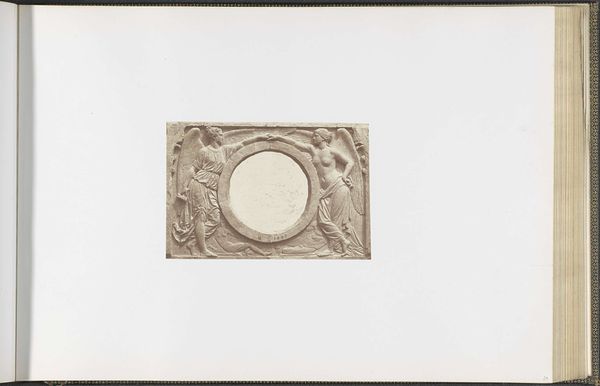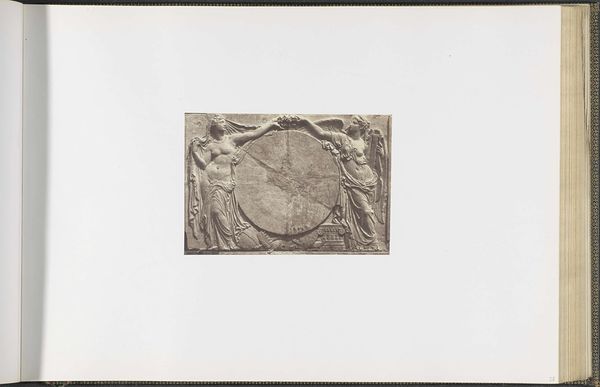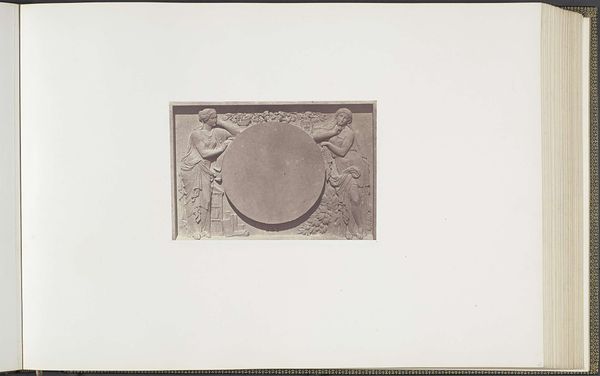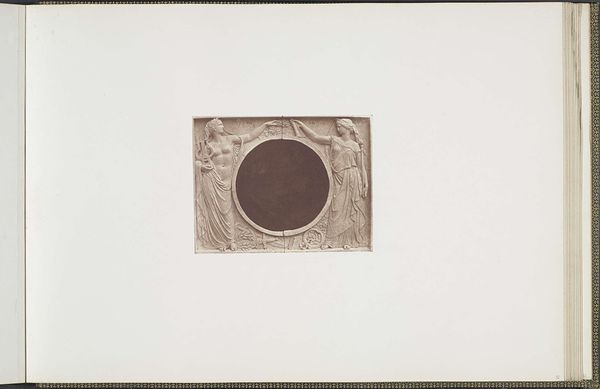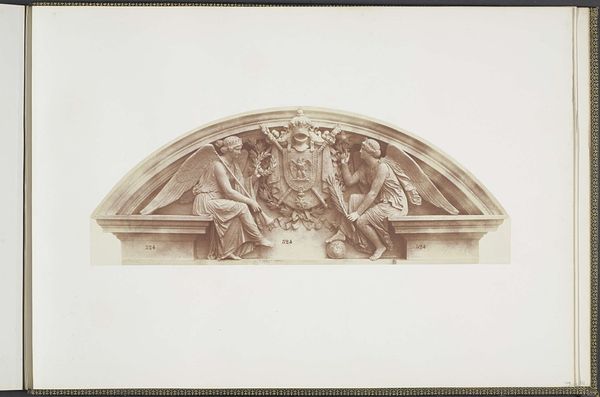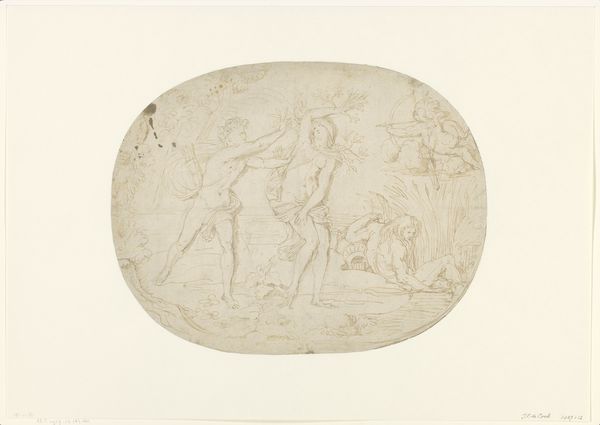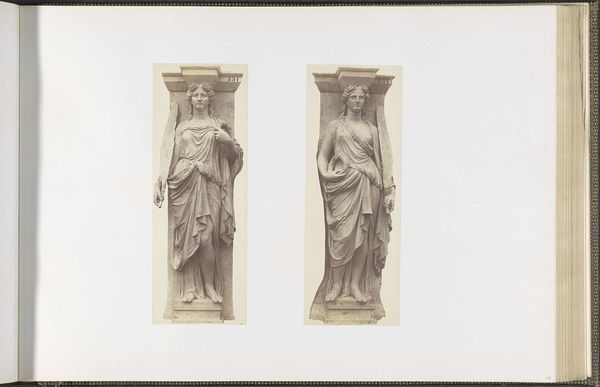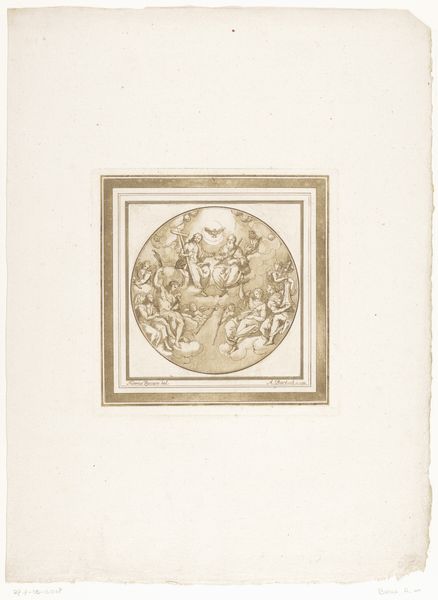
Gipsmodel voor beeldhouwwerk op het Palais du Louvre: "L'Invention et la Réflexion" door Georges Diébolt c. 1855 - 1857
0:00
0:00
edouardbaldus
Rijksmuseum
print, relief, photography, sculpture, albumen-print
#
neoclacissism
# print
#
relief
#
figuration
#
photography
#
sculpture
#
history-painting
#
albumen-print
Dimensions: height 378 mm, width 556 mm
Copyright: Rijks Museum: Open Domain
Curator: This photograph by Edouard Baldus captures a plaster model, "L'Invention et la Réflexion," made by Georges Diébolt around 1855-1857, for the Palais du Louvre. It resides now in the Rijksmuseum's collection. Editor: The first thing that strikes me is the flatness, or the artifice, of this construction. We are looking at a photograph of plaster, not stone. What sort of conversation can occur here when so many layers separate us from an architectural facade? Curator: The photograph flattens the three-dimensional form, yes, but I think Baldus, working in that mid-19th century context, saw an opportunity to elevate the photograph, aligning it with history painting through Neoclassical imagery. The figures themselves, idealized and allegorical, representing "Invention" and "Reflection", harken back to a perceived golden age of artistic and intellectual pursuit. They remind us of a time when society saw creative practice elevated as essential civic engagement. Editor: But what is emphasized is the constructed nature of this history, right? The "perceived golden age" wasn’t just there; someone, in this case, Diébolt, had to labor to literally conjure it. I see how the figures, though positioned as opposites, symmetrically balance the image. How fascinating that those neoclassical allusions can also serve political ends—legitimizing an institution, say, like the Louvre under the Second Empire! This isn’t about art emerging from nowhere; it’s labor, materiality, politics. The neoclassical is deployed. Curator: Exactly, but don't overlook that beyond immediate propaganda, there’s enduring meaning in that interplay between 'Invention' and 'Reflection'. Diébolt captures essential forces for cultural production. This push and pull is how collective memory is constructed; the dialogue creates something new. We look to the past to shape the future. Editor: And we shouldn't shy away from the production of meaning too! From quarrying stone to shaping plaster models, photography's role to dissemination – art emerges through collective action, a blend of hands, tools, and sociopolitical context. And even through our debate. Curator: A fascinating tension remains; these classical forms will speak differently across the centuries, always being shaped anew, yet anchored by the dreams of a new civic architecture for a new republic. Editor: Indeed, Baldus has laid bare the palimpsest in his photograph: neoclassical gesture concealing nineteenth-century material reality, ready for our present encounter.
Comments
No comments
Be the first to comment and join the conversation on the ultimate creative platform.
